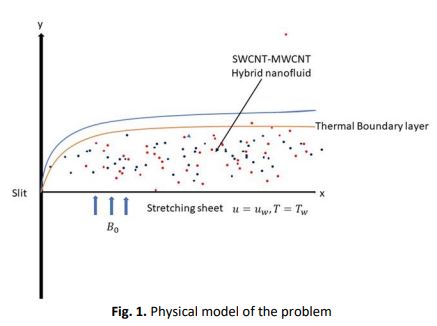Heat Transfer of SWCNT-MWCNT Based Hybrid Nanofluid Boundary Layer Flow with Modified Thermal Conductivity Model
DOI:
https://doi.org/10.37934/arfmts.92.2.1324Keywords:
MHD, hybrid nanofluid flow, shooting method, stretching sheetAbstract
Thermal conductivity is one of the important thermophysical property of nanofluid in enhancing heat transfer. To analyse heat transfer in boundary layer problems thermal diffusivity coefficient along with embedded nano particle thermophysical values will be used via various thermal conductivity models. Many thermal conductivity models are being utilised for theoretical analysis of heat transfer behaviour such as Maxwell model, Hamilton crosser model etc. In this current communication we are analysing the thermal properties of carbon nanotubes by embedding modified Xue thermal conductivity model. Momentum, energy and nano particle volume fraction equations are turned into differential equation of single variable by using appropriate similarity transformation and solved by numerical scheme shooting method. Skin friction, Nusselt numbers for mono particle nanofluid, hybrid nanofluid are computed for distinct physical parameters and it is observed that heat transfer rate is improved with SWCNT-MWCNT as compared to SWCNT.
Downloads
































